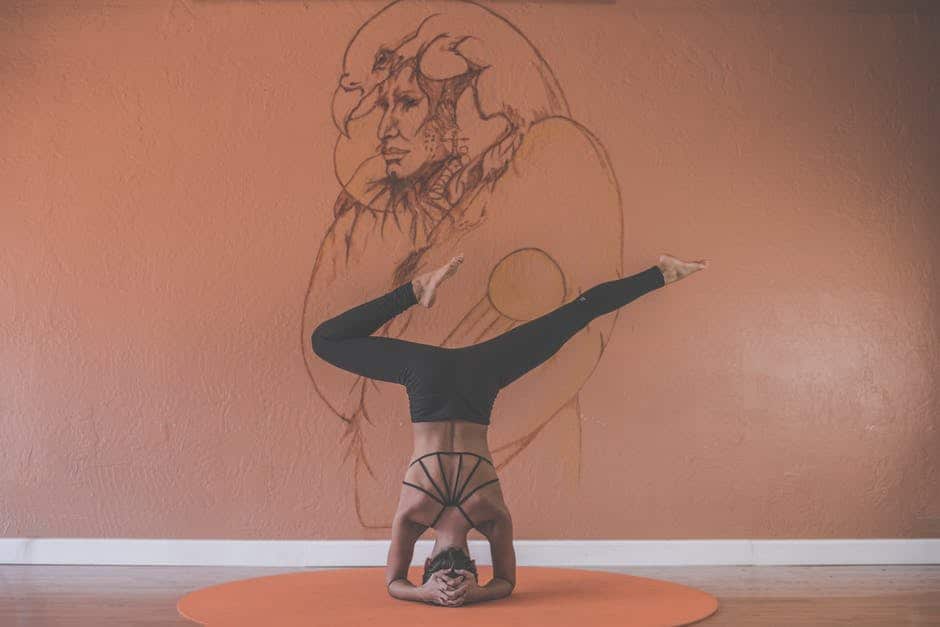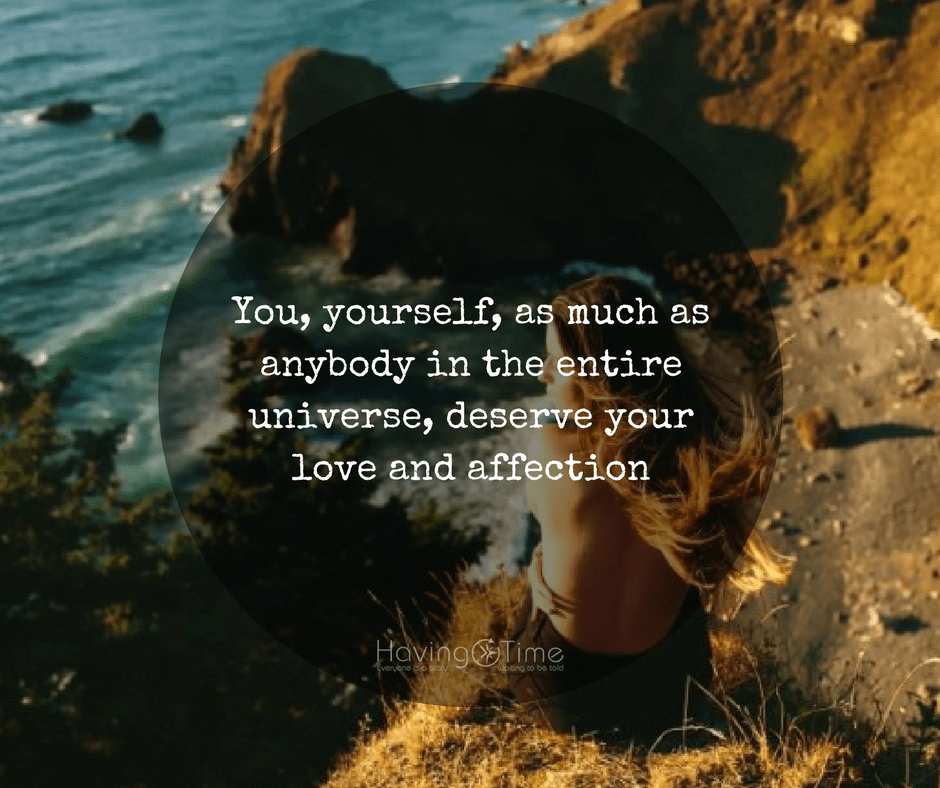
“Nothing ever goes away until it has taught us what we need to know.” – Pema Chodron
I’m a busy gal; writing for my blog, traveling, navigating the dangerous waters of adulthood on a Millennial’s budget…and, like 18% of the US population, I live with an anxiety disorder.
Everyone’s experience anxiety at least once in their lives and it can quickly become paralyzing in the right conditions, making us feel like we’re out of control. Focusing on work becomes harder, traveling any distance is panic-inducing, and everyday tasks can feel like impossible tests.
We are, however, able to pull ourselves out of these episodes by using grounding techniques.
Grounding techniques remind us to be present (“in-the-now”) during times of high stress, panic, and anxiety. They can be used anywhere, at any time, by anyone that needs them. I’ve tried several of these techniques over the last ten years, and I still have to switch up my routine now and then.
Finding the right routine for you takes practice, repetition, and lots of patience so don’t give up if it doesn’t work the first few times. Repeat them as often as you need to until you feel stable again (and don’t be discouraged; these things take time).
How to Alleviate Anxiety: Use These 5 Helpful Techniques
1) Deep Breathing:
-This seems self-explanatory; just breathe deep until you feel calm, right? Honestly, that won’t do much except for making you light-headed and dizzy. But it’s not the length of time that grounds you; it’s your intention as you do it:
1)Find a comfortable position *sitting, standing, lying down*
2)Take three-to-four deep breaths:
-In through your nose, filling your stomach and then your lungs *not so full that your lungs ache or that you feel like coughing*.
-Hold your breath for two seconds and then slowly exhale through pursed lips *think whistling–but don’t whistle–*.
3)Take a few normal breaths.
4)Repeat the set of three-to-four deep breaths if you still feel panicked.
This will help you to redirect your divided focus to your breathing; it’ll give your brain something to do other than spiral. This exercise should give you enough time to use another grounding technique to further deescalate your panic. Congratulations; you’ve taken your first step to grounding yourself! On to the next technique.
2) Sight:

-The trick to pulling through an anxiety/panic attack is using all five senses to keep you present. For this exercise, find a comfortable position and take a look around:
How many trees do you see?
How many red cars are there in the parking lot?
How about streetlamp posts?
You can count out loud to yourself or in your head, whichever way feels best to you. Keep count by tapping your fingers or your foot, but do keep count. This helps you organize and categorize and, again, redirect your thoughts. Your brain can’t spiral if it’s busy doing something else. Count anything and everything, count it all. If you’re feeling more calm and collected, then congratulations! But if not, let’s move on.
3) Touch:
– This is my go-to grounding technique, but you need to be very aware of what you’re doing.
Find your comfortable position (if you can’t get out of whatever position you’re in *which happens to me* then do it from there, don’t panic). Reach out and feel what’s around you, remember where you are and what you were doing (these are some examples):
-Feeling the clothes that you’re wearing:
Touch the hems. Remember why you picked that dress out today or how comfortable your jeans feel or how good you look in that sweater.
-Holding your steering wheel:
Remember where you’re headed, or, what you had just finished doing. Remember the last time you took a long drive just listening to music and how much fun it was. If it’s safe to do so, go on that drive.
-Touching the seat, you’re sitting on:
Does it feel rough or smooth? What is it made out of? Is it cloth or leather, hot or cold? Why are you sitting there? Were you reading? Watching a movie? Waiting for your partner to come home?

Feeling your surroundings is one of the fasts ways to ground yourself. It brings your attention to the present as nothing else can. Your sense of touch is one of the truest senses that you have; you’ll always know where you are if you can tangibly feel it. And again, you need to be observant with this exercise. I’ve accidentally worn holes in my leggings, pulled hems out of shirts, scratched up the pads of my fingers on rocks and bricks, scratched myself by accident with my nails (no self-harm involved) so don’t get carried away. Next stop, Sound.
4) Sound:

-This, combined with Touch and Deep Breathing, is my grounding routine in case my panic attack just won’t quit. There’s a special place in my heart for the music of all different genres, but Classical is my panic-slayer.
I always carry headphones with me where ever I go just in case I’m overwhelmed and need to relax quickly. I’ll put the ear buds in (always be aware of where you are and who else is in the area) and blast some Debussy.
Pick any style of music that you’d like, but let’s leave the grindcore or death metal for another time. You’re going to want something soothing and light. You want your heart rate low and slow and easy-breezy (there will be plenty of time for house and techno after your panic attack passes).
This technique, like Deep Breathing, can be done virtually anywhere. The key is just to listen. Don’t over think this. Take a break from the panic and try to relax.
5) Smell/Taste:
-There’s conjecture on using food or drink to cope with chronic anxiety. I wouldn’t recommend it because of accessibility. I do try to carry snacks around with me, but it’s not much more than a small box of raisins or a sleeve of crackers…not exactly “comfort food.”
I will say, though, that not keeping a regular and balanced eating schedule could certainly affect your mental disorder or overall mood. So I consider Taste to be a long-term coping skill instead of an emergency fix. If you are panicking, ask yourself when you last ate a full meal (and then please eat something *and drink plenty of water* if it’s been more that five hours).
Now Smell (aroma therapy ) is credited with lowering blood pressure and relieving anxiety. I wear perfumes with an amber base because that smell is super calming to me. Other people love the smell of flowers or foods, and they wear perfumes and lotions or even diffusion pendents to keep themselves relaxed no matter where they are.
Allergic to fragrance in body products? You can research companies that specialize in sensitive products (Pacifica is a vegan, animal cruelty-free company *this isn’t an ad, just a grateful shout-out from a girl that’s allergic to EVERYTHING*).
These are only a few of the techniques that I’ve used throughout the years, but there are so many different ones that you can try. Anything that brings you peace can be a grounding technique; you just need to remember to work at it and always be kind to yourself. One step at a time.

A reminder in case your mind is playing tricks on you today- You matter. You’re important. You’re loved. Your presence makes a difference…


